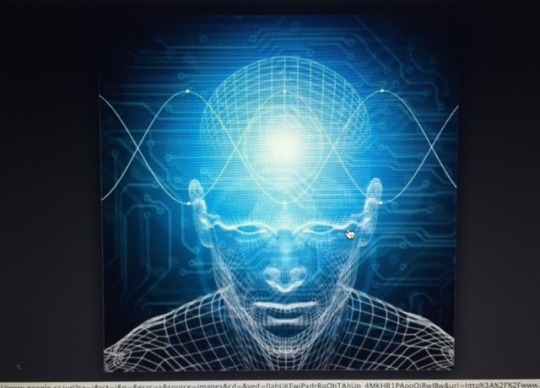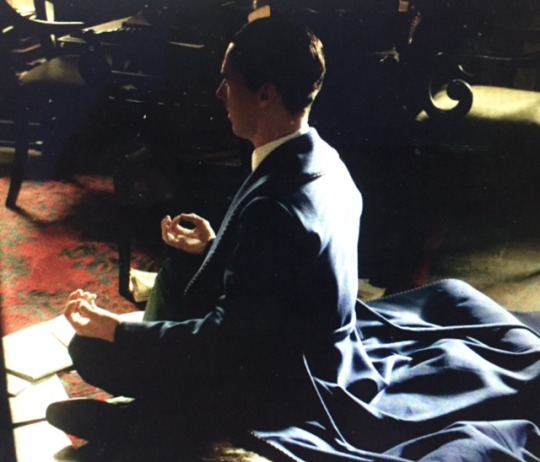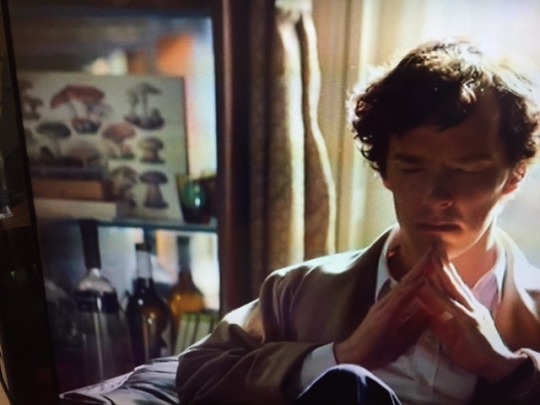#That's possible because he can read all Sherlock Holmes book multiple time while I cannot
Text
HAPPY BIRTHDAY KUDOU SHINICHI!!
So as a detco fan for uhhh about four years now, I had this thought about how... ordinary Shinichi is in detco universe where Japan had a bunch of genius teens and adults. Beika alone have Shinichi and Yuusaku, Sera and Mary, Amuro, Akai, Jodie, then we have those in other part of Japan like Heiji and Heizo, Kaito, Hakuba, and other competent officers outside of TMPD. Hundreds of new chapters in detco, everytime new characters were introduced, most of them were more intelligent than the average people. I've come to wonder why Shinichi was such a Big Deal. Why he's the Great Detective and saviour of the police? Lots of other people could have achieve that title, so does Shinichi only got there first because he's a detective nerd? The one who cannot get enough of deducing things? The one who have connection to police and thus can squeeze their way into most investigations?

Then I had this new thing in my life that is quite familiar to detective work (seriously they have all these cases and interrogation stuff going on) . At first I was excited to dive into it because it really is a similar setting to detco minus the crimes and murder, but then.... I got tired of it. I got bored, and most of the time came up blank even with all the clues in front of me because I'm so tired of it. There's also the fact that there is sooo many cases coming in and every one of them is different and certainly does not follow the textbook rules. There's also the knowledge that if we got to the wrong conclusion we will literally ruin someone's life and... Isn't that the most depressing thought? Everyone's pressuring you and you cannot fault them because it is a big responsibility.
So I guess now I understand why detco can have hundreds of geniuses but only one Heisei Holmes. Only one Kudou Shinichi. Because he's the one who put his heart into it. The one who have passion for the one truth. The one that got his ass kicked by that very same passion yet still pick himself up and continue to pursue his goal to put all criminals behind bars. The one that knows full well of the weight of his words and thus put so much care into it. The one that truly cares about every single person around him instead of seeing them as mere pieces in a puzzle (at least for this one, he learn it throughout the journey).

Most of the brilliant characters in DC can be a good and competent detective. Some of them already are. Most of them have kind hearts and don't want random people to be wrongfully accused. But intelligence and kindness alone are not enough to be a great detective because it's not just about piecing together puzzle or solving a code. You still have to interrogate people that don't want to be interrogated, talk to people with emotions ranging from devastated to murderous, with a certain time limit or else the evidences will disappear either naturally or planned. Isn't it stressful? Top it with the whole being-in-the-same-room-with-a-murderer... It's certainly hard to find anyone that will happily put themselves in those situations because if I were to be the smartest person in the world I sure would find better things to do.
#Yeayy Shinichi's appreciation post!#Forgive me I cannot draw I can only rant so happy birthday to my favourite boy!!#Seriously I'm in this state where I'm desperate to have Shinichi's intelligence. Life is hard and my brain not fast enough to catch up#Now that I think about is Shinichi a genius or just a diligent student?#That's possible because he can read all Sherlock Holmes book multiple time while I cannot#There's some book I can read but not fast and I think I forgot most details#Too bad so sad I guess I will just lie down in this pool of dissapointment and admire Shinichi from under here#Lol I'm kidding I'm not that depressed. Anyway I know most of this rant is stupid-#-but I love my smart boy and having all these new detectives make me feel like he's not that special anymore that's why#Kudou Shinichi#Detective Conan#This is quite rushed and English is certainly not my first language so pardon me#Long post
47 notes
·
View notes
Text
Sherlock S4 Trance Theory and how it explains “everything” (including the blue lights, the repeated plot/dialogue, the odd sound glitches, and the flickering lights)
First, before I elaborate on my reasoning for Trance Theory, I just need to write a brief(ish) A/N:
I believe that all my Tumblr friends (mostly Johnlockers) are a group of passionate, kind, intelligent fans who have been moved deeply by the love between John Watson and Sherlock Holmes (and consequently feel strongly about this show.)
I realize that a lot of you were disappointed with S4--especially TFP. Likewise, I realize that some of you liked S4, were satisfied with how the show ended, and believe it must be taken at face value.
I find myself in neither group and would like to present a theory that hopefully convinces my friends that the S4 is actually a clever, beautiful, unfinished, multi-layered puzzle. :D
TRANCE THEORY (Part 1)
Sherlock Holmes is known for his keen sense of observation and for his amazing deductive skills. But another one of his “superpower” is his ability to go deep within himself in order to solve a case.
In every ACD canon story, after a new case has been presented, or when the clues get all tangled, Holmes does nothing more than recline in his chair, put his hands together, and disappear in a trance-like state using a specific meditative technique he learned in Tibet,
I propose that this is exactly what is happening in S4 of Sherlock.
My basic premise is that Sherlock has been in a deep Tibetan Trance since to end of HLV in order to solve the apparent return of Moriarty.
In this meta I will provide evidence that Trance Theory is the silver thread that connects and explains all the plot inconsistencies, repeated dialogue, the multiple sound glitches, the odd flickering lights, the blue colouring, the glowing skull, why Sherlock talks to John when John’s not there and how it’s also entirely based on ACD canon.
A trance is a deliberate act of self-hypnosis (It is different than using a mind palace or being in a coma.) The purpose of Sherlock’s deep trance is to enter a half conscious state in order to let anything relevant he has unconsciously noticed rise to the surface of his consciousness in order to make links and solve the case.
I realize that for some of my Tumblr friends this seems unbelievable because it’s hard to believe that Sherlock is in a trance for that long (ie 3 episodes worth! :D ) But Mrs Hudson in TAB explicitly told us that Sherlock has the ability to sustain a trance for 2 days! (more on that later). Anyway, for me, taking S4 at face value is acknowledging that what we are seeing is the art of deduction at its very best. Season 4 is Sherlock’s incredible brain at work.
Heck, knowing Sherlock is in a trance is like obtaining the key to a cipher. All you need is your copy of ACD canon and a few of the other Sherlock Holmes adaptation and you can basically figure out everything. Ie; Sherlock’s entire backstory, why Moriarty is the virus in the data, IOU, and the deep secret. You can also find the answer other loose threads on the show. For example: The significance of the phone number Eurus gives John, the connection between the “Black Pearl” and A.G.R.A, why Culverton Smith made reference to the Queen, why Magnussen has chronically moist hands, who Alicia Smallwood is, why Mycroft does not like clowns, what the funny graves are, why mummy Holmes wrote about the thyroid gland in her thermodynamics book, why Mary never regained John’s trust, who is really hiding in plain sight, the Thatcher connection, who the sharks are, who is Charlie and his power ranger, the meaning of “6 by 16 and under we go” (OMG that drove me crazy), glowing skulls, glowing rabbits, etc, etc. etc,,,
And last but not least, Trance theory shows how we were right all along; this is a Johnlock story of epic proportion.
Okay, before I get to the fun part of explaining all these things, I first need to provide concrete evidence that Sherlock is in a trance.
EVIDENCE #1- Blue lights/ flickering lights and sounds are used to induce a deep trance and cleverly show that the entirety of S4 is taking place in Sherlock’s subconscious.
To induce a deep meditative trance, you need to reach a different state of consciousness by altering your brainwave activity. Different depths of meditation corresponds to different wavelength frequency.
Light and sound both travel as wave frequency and can help the brain alter its wavelength frequency. This is due to the fact that the brain naturally synchronizes to its environment. ( I’m sure you’ve heard of strobe lights causing seizure in certain people?)
Hypnotists (or people doing self-hypnosis) use coloured lights, flickering lights and sound machines with glitches to help synchronize the brain faster.
And, yes, you’ve guessed it, the wavelength of the colour blue has the same wavelength as the “theta” state of consciousness (ie, deep trance).
That’s why blue lights have come to represent a trance (and that’s why some people claim to stay away from blue lights to avoid mind control because it induces a trance).
Sherlock can enter a trance without needing lamps and binomial sound machines, but since we are seeing everything from the prism of his mind, the blue is highlighted because they have the same frequency. I think it’s a very clever way of showing the viewers his internal state of mind.
In fact, the photo below shows the light frequency of a brain in a trance.

Interestingly enough in the commentaries/special features for Sherlock S4, they show Sherlock in a trance surrounded by blue light for each of the 3 episodes (after a brief intro). See the similarity between the two images?

EVIDENCE #2: Prior to S4, the writers have shown us 2 major phenomenons that are only possible if Sherlock knows how to go into a deep Tibetan trance.
There are different levels of trance mastery. In ACD canon we are told that Holmes learned his meditative techniques while visiting Tibet. There, he met the Daiai Lama who has the ability to teach the highest levels of meditative trance. In BBC Sherlock, we know Sherlock also visited Tibet during his hiatus. (In fact, there is evidence he was in Tibet before his hiatus--I’ll get back to this later.)
A) One of the highest levels of tibetan trance is the ability to create the impression of time travel with your mind. This explains how Sherlock was seemingly able to go back to the Victorian era in TAB. He was not in his mind palace. Like Mycroft said, a mind palace is a memory technique used to store information efficiently.
(You can retrieve data from your mind palace while in a trance, but you cannot create the illusion of time travel with a mind palace. I think the way it was phrased in TAB was a nice decoy. )
You can read more about mind palaces (called Memory Palaces) here
B) Another high level of Tibetan trance mastery is the ability to create a TULPA:
Tulpa is a concept in Tibetan Buddhism whereby a person or object is created through spiritual or mental powers. The term Tulpa comes from Tibetan "emanation" or "manifestation".
I believe that Sherlock created a Tulpa of John when John was “away a lot”. The first manifestation of Tulpa!John that I noticed is in Scandal in Belgravia. Remember how John goes to solve the case without Sherlock because it’s only a “6″ and then he’s also shown sitting on the sofa in 221B? (That explains why Mrs Hudson yells “Boys, you have another one!” My guess is she heard Sherlock talking to Tulpa!John and assumed they were together in Sherlock’s bedroom. No wonder she thinks they are a couple!)

We also see Tulpa!John in TSoT a few times. I gather he manifests often and that’s why John warns Irene that Sherlock talks to him when he’s not there. (And why Sherlock notes it in T6T with the red balloon.) The fact that “imaginary” John is actually part of a meditation technique is quite reassuring to me (or else you have to wonder what IS going on with Sherlock?)
You can read more about Tulpas here and why they manifest often.
EVIDENCE #2- Sherlock is seen in 2 well-known Tibetan Trance positions.
1) In TAB we see Holmes deep in a trance sitting in the famous Tibetan Lotus position. Mrs Hudson tells us that he has been like this for two days.

2) The other position for a deep trance is called the “reverence” position where you connect the fingers of both hands as if in in prayer. This seems to be ACD/ BBC Sherlock’s favourite trance inductive position.

4) Other Clues that Sherlock is in a trance:
1) Pre-Season 4, we were shown the title of the show “Sherlock” glitching over TV colour bar test pattern. (Can’t find the image anymore, do you folks know what I mean? Does someone still have a picture?) One of the uses of the colour bar test pattern is to indicate that the regular programming is not available at the moment (Clever!)
2) Another clue that Sherlock is in a trance is the element of “mind control”. During his trance, Sherlock has picked up that Mycroft has modified his memories, deleted Eurus, and has incorporated certain trigger words to check on him. All these things fall under the umbrella of a trance and also use sounds and glitches to interfere with memories. (There’s a lot more to say about mind control in part 2)
4) Water is another symbol for a trance because water’s natural vibrational frequency also falls in the theta state of deep meditation.
Conclusion:
Part 1 of Trance Theory linked ACD canon to Series 4 and offered a logical explanation as to what is going on with some of the lightning, colouring and sounds.
I believe that taking S4 at face value means accepting that it’s actually all happening through the lens of Sherlock’s trance state.
Part 2 of Trance Theory will address the reasons for the repeated dialogue, why there are seemingly different POV’s, and why it sometimes looks like the ‘fourth wall’ is broken.
At this point, I’d like to acknowledge the lovely @monikakrasnorada and her extensive work on EMP theory. If it weren’t for her, I might not have stumbled upon this. I know we are essentially talking about the same thing: ie. S4 takes places in Sherlock’s subconscious. The reason I’m calling it a trance is because (and correct me if I’m wrong) EMP starts when Sherlock is shot by Mary in HLV and goes into a coma.
I don’t think Sherlock is in a coma. I think he purposely put himself in a trance on the plane in order to solve Moriarty’s return. (I was lucky enough to chat with the wonderful Mark Gatiss after the pre-screening of TFP at the BFI and I told him I knew Sherlock was still on the plane!)
Also, I think I’ve discovered why Magnussen has a mind palace too and how it’s connected to Sherlock and Mycroft. It’s a different mental task than a trance so I want to keep the terminology separate.
Interestingly enough, before TAB aired, I had hypothesized that the only way to do time travel without resorting to supernatural means was by hypnosis. But I wasn’t thinking of self-hypnosis at the time, I was thinking Sherlock had been hypnotized by someone else to go into a deeper state of consciousness. Looking back at my old meta, I realize that the showrunners had given us several clues back then too. :D
Thanks for reading if you made it this far. I’ll link Part 2 of Trance Theory soon. xo
Tagging: @gosherlocked, @monikakrasnorada, @avawatson @inevitably-johnlocked, @devoursjohnlock, @materialofonebeing, @isitandwonder,
259 notes
·
View notes